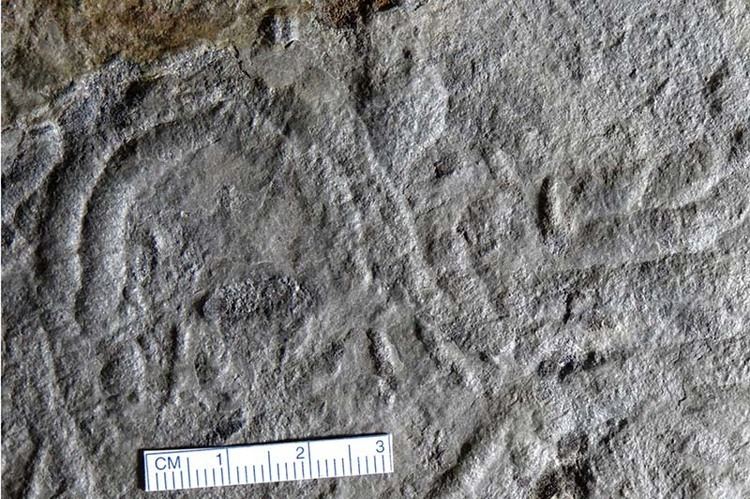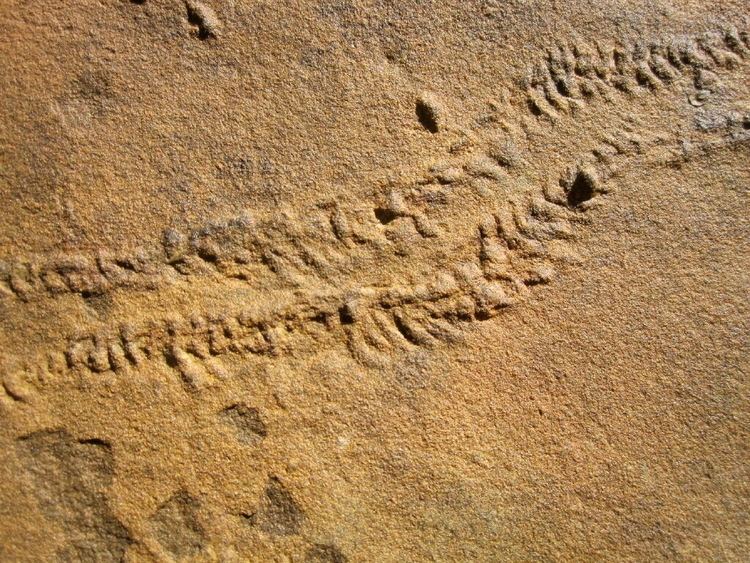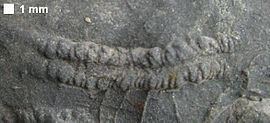 | ||
Ichnogenus Cruzianad'Orbigny, 1842 Similar Rusophycus, Planolites, Thalassinoides, Diplocraterion, Teichichnus | ||
Growing pains the life and times of victoria cruziana
Cruziana is a trace fossil consisting of elongate, bilobed, approximately bilaterally symmetrical burrows, usually preserved along bedding planes, with a sculpture of repeated striations that are mostly oblique to the long dimension. Trace fossils can reveal many aspects of their makers' behavior, and work on Cruziana has been extensive.
Contents
- Growing pains the life and times of victoria cruziana
- Victoria cruziana in the hohenheim gardens second time lapse video
- References

The makers of Cruziana are mainly considered to have been trilobites; since they appear in the non-marine Beacon Supergroup, and Triassic deposits (after trilobites became extinct [Permian]) they must also have been made by other arthropods. In some cases, the burrow begins or ends with a resting trace, called Rusophycus, whose outline corresponds roughly to the outline of the tracemaker, and whose sculpture may reveal the approximate number of legs, although striations (scratchmarks) from a single leg may overlap or be repeated. If the trilobite sped up, ichnogenus Diplichnites may result. Several specimens of Cruziana are commonly found associated together at one sedimentary horizon, suggesting that they were made by populations of trilobites.

Cruziana can reach 15 mm across and 15 cm in length, with one end usually deeper and wider than the other.

The trace fossil is found in marine and freshwater environments. It has uses in biostratigraphy; certain scratch patterns are unique to certain time intervals.

Victoria cruziana in the hohenheim gardens second time lapse video

